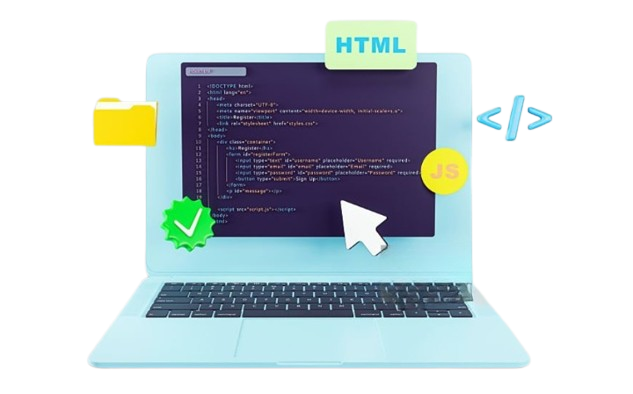In today’s web development world, writing clean, accessible, and meaningful code is more important than ever. As websites grow in complexity, ensuring your HTML structure is readable, SEO-friendly, and inclusive has become a necessity — not just a best practice.
This blog dives into the power of Semantic HTML, explores the new features of HTML5, and explains why these principles are essential for modern web development.
What is Semantic HTML ? - 🧩
Semantic HTML refers to the use of HTML tags that convey the meaning and purpose of content in a web document. Rather than using generic tags like (div or span,) semantic elements like (header, article, section, and footer) describe the role of the content inside them.
Why It Matters :
. Improves Accessibility: Screen readers and assistive technologies understand the page structure better.
. Enhances SEO: Search engines can better index and rank content based on its relevance.
. Boosts Readability: Developers can quickly understand and maintain the code.
. Supports Consistency: Creates a predictable document structure across different projects.
Key Semantic Tags You Should Know 📌
. header – Defines introductory content or navigational links.
. nav – Contains navigation menus and links.
. main – Highlights the main content area of the document.
. section – Represents a standalone section of content.
. article – Ideal for self-contained content like blog posts.
. footer – Marks the end of a section or the page itself.
. By using these tags, you help both users and browsers understand how the content is structured — and that’s a win-win.
HTML5: A Game Changer in Web Development - 🚀
HTML5 brought a massive leap forward from its predecessor, introducing new tags, APIs, multimedia support, and form enhancements that revolutionized how we build modern websites.
Notable HTML5 Features :
Semantic Elements – article, section, figure, etc., make code more meaningful.
. Audio & Video Support – Native audio and video elements reduce reliance on plugins.
. New Input Types – Email, date, range, and more improve form usability and validation.
. Canvas API – Enables rendering of graphics and animations.
. Geolocation API – Accesses user location for enhanced UX.
. LocalStorage & SessionStorage – Store data in the browser without cookies.
These innovations empower developers to build faster, lighter, and more interactive websites with less dependency on external tools or JavaScript libraries.
Why Semantic HTML + HTML5 Is Essential - 🧠
Combining semantic HTML practices with HTML5 features creates a strong foundation for building websites that are:
. Responsive and mobile-friendly
. Inclusive for all users, including those using assistive tech
. Optimized for search engines
. Future-proof and easier to maintain
Whether you're building a personal blog, an e-commerce platform, or a web app, understanding and applying these principles will help you deliver high-quality digital experiences.
Conclusion
Semantic HTML and HTML5 are more than just trends — they’re the standard for writing modern, accessible, and meaningful web code. By adopting these practices, you're not only improving the quality of your websites but also contributing to a more inclusive and structured web.
As the founder of Hoopsiper.com, I, Shashank Shekhar, am committed to empowering developers with practical, real-world tech knowledge. Stay tuned to Hoopsiper for more tutorials, coding tips, and innovations that matter


